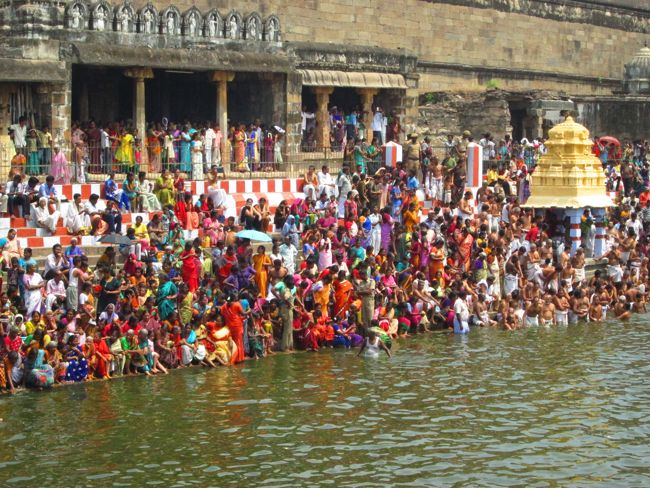Events and Festivals of Thondaimandala Samrajyam
A Range of Festivals for Conscious Growth
In Thondaimandalam, festivals are celebrated almost everyday in its various temples. Throughout the year, different events and festivals happen to keep the enlightenment ecosystem alive. An ambience which encourages continuous participation in such festivals of deep spiritual context aids in continuous Conscious growth. The Masi Mahotsavam, Mahashivratri, Brahmotsavam, Garuda Sevai, Silk Tourism Festival, Float festival and Temple Car Festival are some of the festivals in Kanchipuram that are celebrated with great fervor and enthusiasm.
Kailaasanathar Temple
Mahashivaratri Festival and Panguni Uthiram Festival
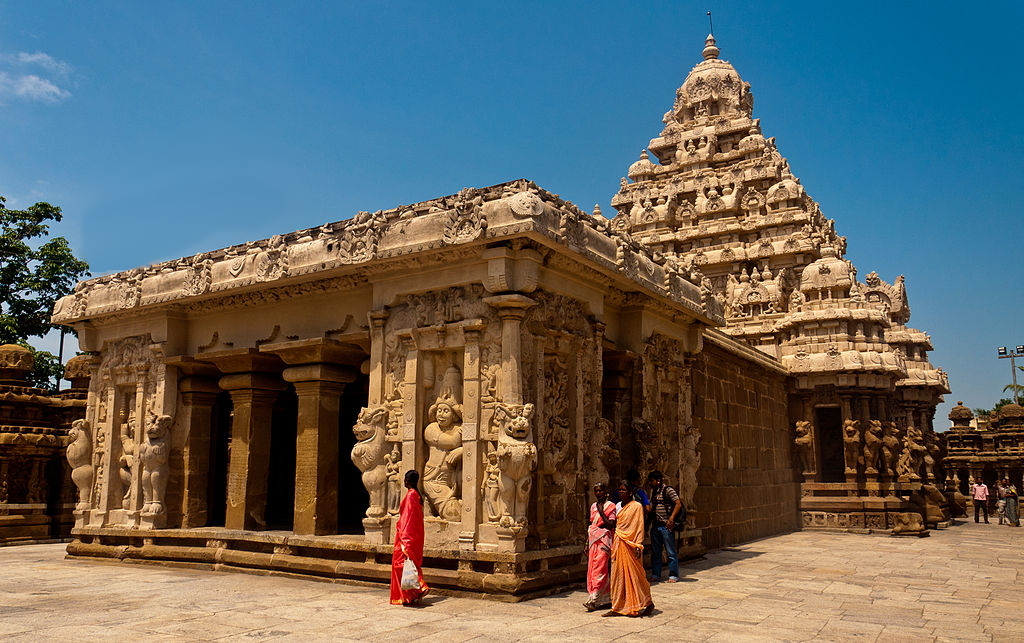
The Kailasanathar Temple, dedicated to Paramasiva and built by the Pallava Kings, is considered the oldest Hindu temple in existence and is declared an archaeological monument by the Archaeological Survey of India. It has a series of cells with sculptures inside.
The Mahashivaratri Festival is celebrated in February-March. The Mahashivaratri festival is celebrated as the day Paramasiva appeared as a column of effulgence and destroyed the ego of Brahma and Vishnu and gave them the ultimate enlightenment.
The Tamil month of Panguni (March-April) is also the month when the regional festival “Panguni Uthiram” is celebrated with great enthusiasm. It falls on the Uthiram star of the Tamil month Panguni which coincides with a full moon. It celebrates the divine union of Paramasiva with His Divine Consort Parvati, Lord Muruga with His Divine Consort Deivanai, Andal with her Divine Consort Ranganayakar, the union of Lord Rama with His Divine Consort Sita and many other such Divine unions.
Ekambareshwarar Temple
Panguni Uthiram and Other Festivals
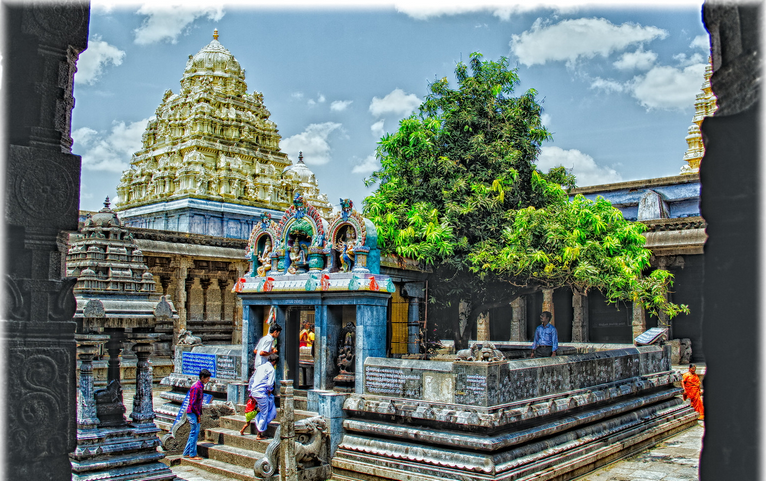
Ekambareshwarar temple in Kanchipuram. The sacred Mango tree is seen in the picture.
Diwali, also known as Deepavali or Deepawali is one of the most important, hugely waited and immensely cherished festival celebrated across India and in parts of Nepal. Originally, the name was Deepawali, which has its origin from Sanskrit, meaning “Rows of Deep” (deep meaning Light). According to the Hindu calendar, the festival of Diwali is celebrated on the new moon day that marks the end of the Vedic month of Ashwini and beginning of the month of Kartika (November -December.
Its gateway tower, or gopuram, is 59 meters (194 ft) tall, making it one the tallest temple towers in India. The temple is one of five called Pancha Bhoota Stalams, which represents the manifestation of the five prime elements of nature – land, water, air, sky, and fire. Ekambareswarar temple represents the earth element.
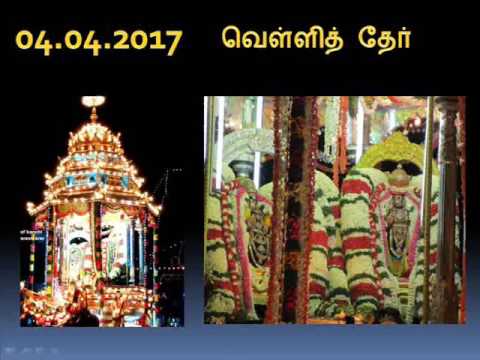
The biggest and grandest festival celebrated in this temple is Panguni Uthiram Brahmotsavam which celebrates the divine union of Paramasiva and his Divine Consort. It is celebrated through 13 days in the Tamil month of Panguni (Feb-March). As part of the festival, the Divine marriage of Ekambaranathar and Elavarkuzhali Amman is celebrated and the venerated Tamil poems of the Nayanmars (enlightened devotees and poet-saints of Paramasiva) are sung in great splendor. This has grand events with processions of the deities in Silver Ratha (Silver chariot seen in the picture), Silver Maavadi Sevai (Maavadi means “under the mango tree”. It is under the mango tree in this temple that Paramasiva delivered the sacred Source Scripture Kamika Agama to His Divine Consort Devi Parvati Hence the Lord is taken in procession under a symbolic mango tree.) and the Golden Vrishabha vahana (the sacred golden bull vehicle of Paramasiva). It is the biggest festival of the temple drawing devotees in lakhs.
The Nayanar Uryavan Festival (seen in picture) is celebrated in the revered memory of the 63 enlightened Nayanmar – Saint devotees of Paramasiva. The deity of Lord Ekambareshwarar (who is Paramasiva assuming the name Ekambareshwarar) is taken around the city in a marvelous procession.
The Devaadhiraj Mahotsavam festival is celebrated once in every 40 years atop the Athigiri Mountain in Kanchipuram when the deity of Lord Vishnu reclining upon his celestial King serpent Adishesha is brought out only for 48 hours.
Varadaraja Perumal Temple
Brahmotsavam Festival
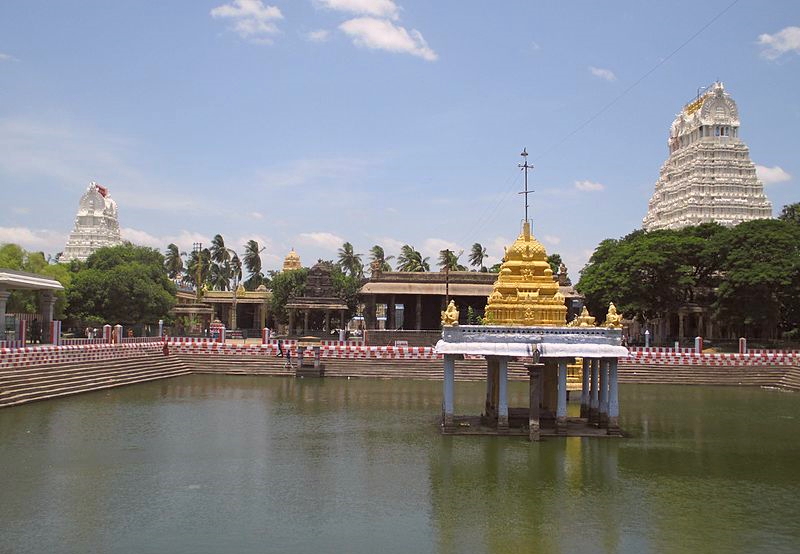
Varadaraja Perumal Temple, Kanchipuram
The main festival of the Sri Varadharaja Perumal Swami Temple in Kanchipuram is held every year in the Tamil month of Vaikasi (May-June). This is a famous festival called Vaikasi Brahmotsavam. The festival is held to honour Lord Varadaraja and his two Divine consorts, Sridevi and Bhoodevi. Festivities include a ceremonial bath of the presiding deity and a grand procession following the ceremonial bath everyday. Garudotsavam is part of the Brahmotsavam Festival, when deities from the neighbouring temples are welcomed at the Varadaraja Temple.
The festival is celebrated for ten days where the deity comes around the town in the chariot early morning and at night adorning a different form of decoration everyday and on a different vehicle every time. Early morning the devotees would gather near the vahana mandapam (hall where the vehicles of the Gods are placed) to have darshan of Varadharaja Perumal. The various forms in which the Lord would appear for the people are: Thanga Sapparam (golden chariot) and Simha Vahanam (Lion vehicle) on the first day, Hamsa Vahanam (Horse vehicle) and Surya Prabha Vahanam (the Sun God in the form of an arch behind the deity) on the second day, Garuda vahana seva (Divine eagle vehicle), gopuram darsan (Seated on a Sacred mountain) and Hanumantha vahanam (The Monkey-god vehicle) on the third day, Sesha vahanam (Snake vehicle) and the Chandra prabha vahanam (The Moon god as the arch behind the deity) on the fourth day, Thanga Palki Seva (Golden palanquin as vehicle) and Yali Vahanam (The ancient horse-lion like animal that existed in ancient India as vehicle) on the fifth day, Thanga Sapparam (Golden chariot) and Gaja vahanam (Elephant vehicle) on the sixth day, Rathotsavam (Temple car) on the seventh day, Thottil Tirumanjanam (immersing the deities in a water tank to symbolically purify them after their previous day’s chariot procession into the city) and Ashwa Vahanam (Horse vehicle) on the eighth day, Theerthavari (ritualistic bath in a nearby water body), Almel Pallaki Seva (special palanquin), Punya Koti Vimana (where the Lord offers darshan of the temple tower above Him called punya koti vimana) on the ninth day and Dvadasa Aradhanam and Dvaja Avarohanam (lowering of the flag to mark the conclusion of the festival) on the tenth day.
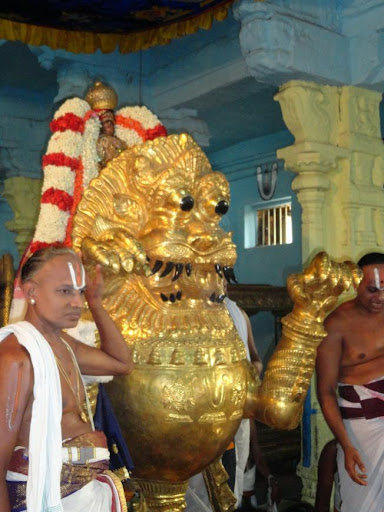
Simha vahanam
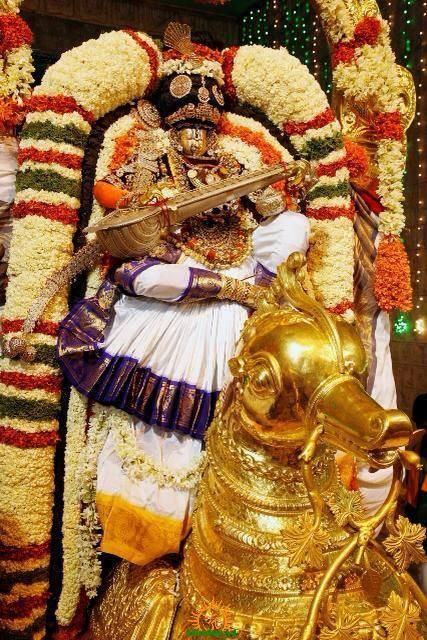
Simha Vahanam
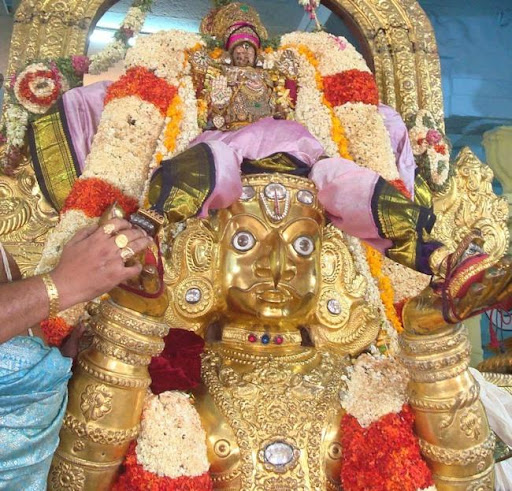
Garuda Seva
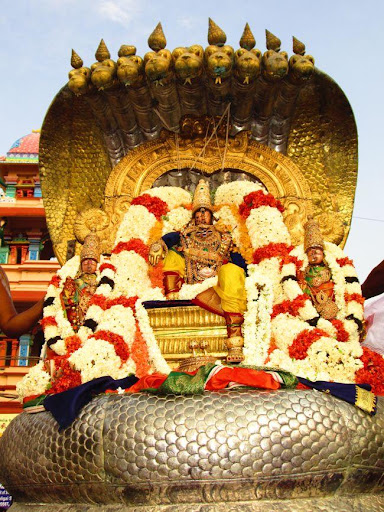
Sesha vahanam
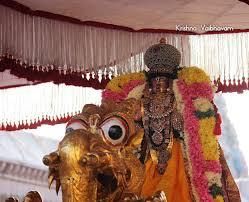
Gaja Vahanam
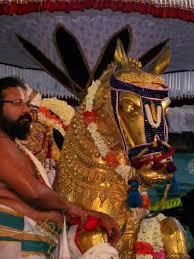
Ashwa vahanam
Garuda Seva on the Third Day
The third day of the Brahmotsavam is special when ‘Garuda sevai’ takes place. It is specially significant because Garuda or eagle is the vehicle of Perumal the presiding deity here. Devotees come from far away places to see Garuda the actual vahana (vehicle) of Perumal carry Him along the streets of Kanchipuram making everyone happy. The golden Garuda with eyes full of karuna (compassion) would cast his kataksha (divine grace) on everyone while His master’s (Perumal) feet would rest on his open palms. The temple priests would give individual blessings touching each one’s head with the sadaari (feet of Perumal made like a blessing deity). After the procession, Garuda would look tired and devotees would offer cool flowers and vastrams and towels to wipe his sweat!
Chariot Festival on the Ninth Day
The ninth day of the Brahmotsavam is the Temple Car Festival, also known as ‘the Varadaraja Perumal Rath Yatra’ and is organised when the deity of Lord Varadaraja Perumal is carried in wooden chariots in a pompous procession. The beat of drums and the chanting of the Vishnu Mantra (sacred utterances in glory of Perumal – also called Vishnu) create a different world altogether.
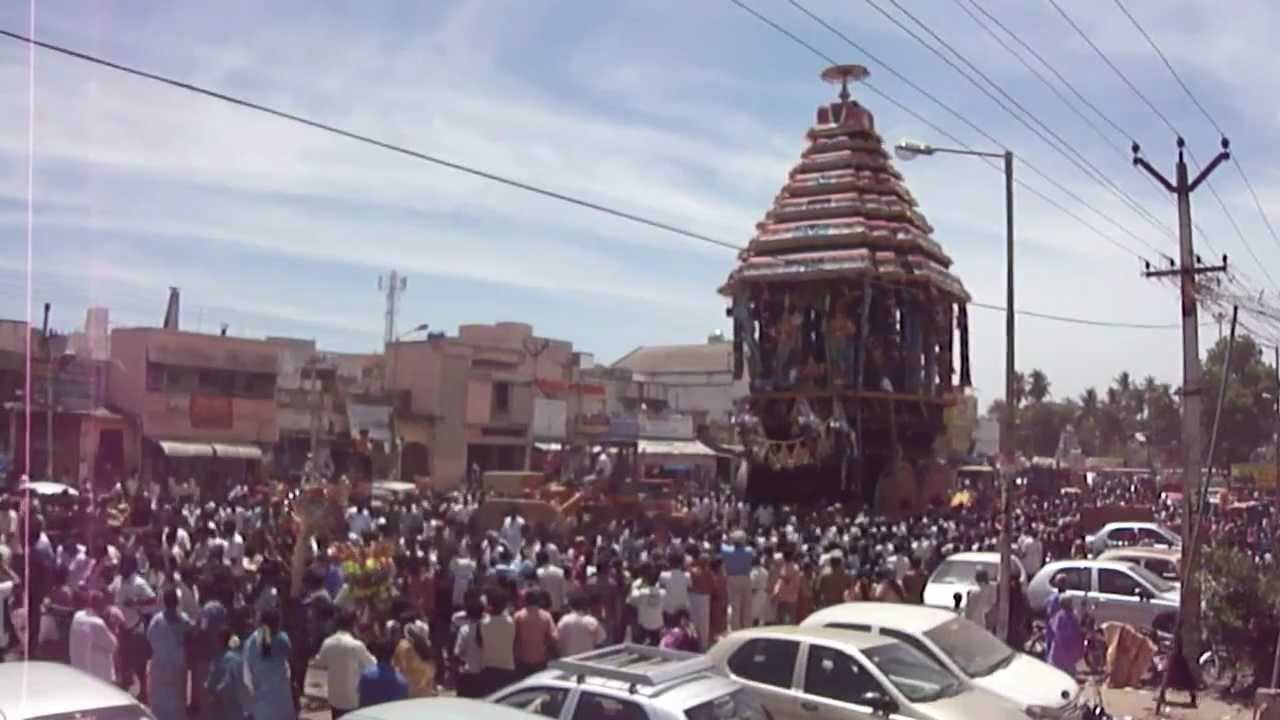
Rathothsavam – procession of deities in the Ratha (temple car or chariot)
The Float Festival or Theppotsavam
The Float Festival or Theppotsavam is celebrated during the months of February and November at the Varadaraja Perumal Temple. In this, the procession of the presiding deities of Perumal (Vishnu) and His Divine Consort Thayar to the temple garden or Dorai Thottam is carried out. The festival is held three times every year, which includes a three-day celebration at the Ananda Saras (water tank in the temple). It is also conducted in the lake in the village of Thenneri, 25 km from Kanchipuram and at a village tank called Rajakulam. Besides these, several other temple festivals are celebrated throughout the year.
Kamakshi Amman Temple
Masi Brahmotsavam Festival
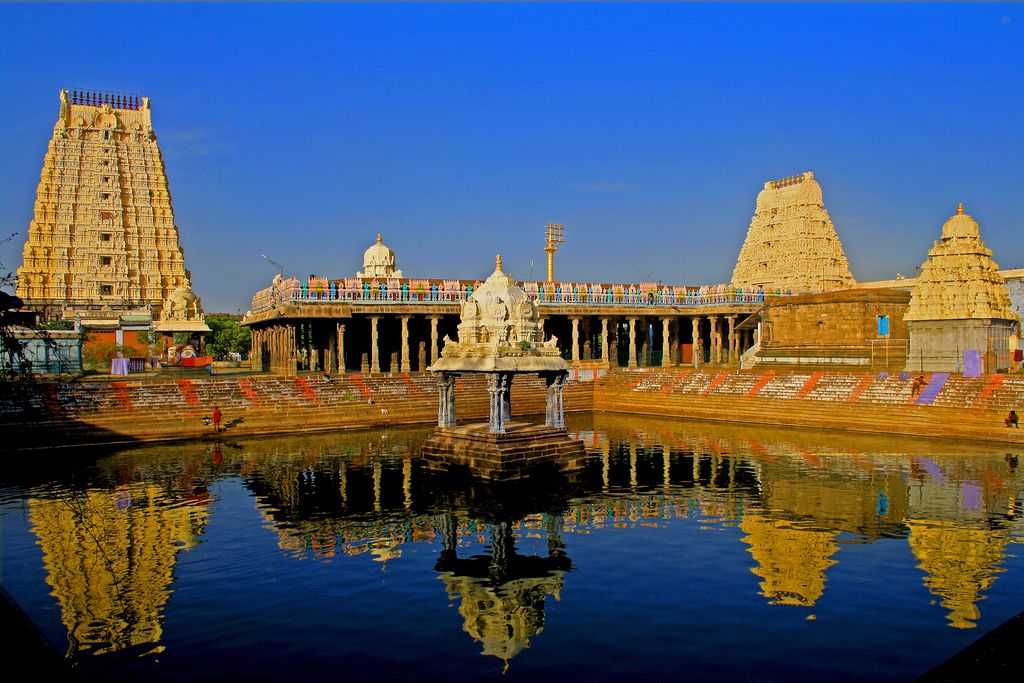
Kamakshi Amman Temple, Kanchipuram
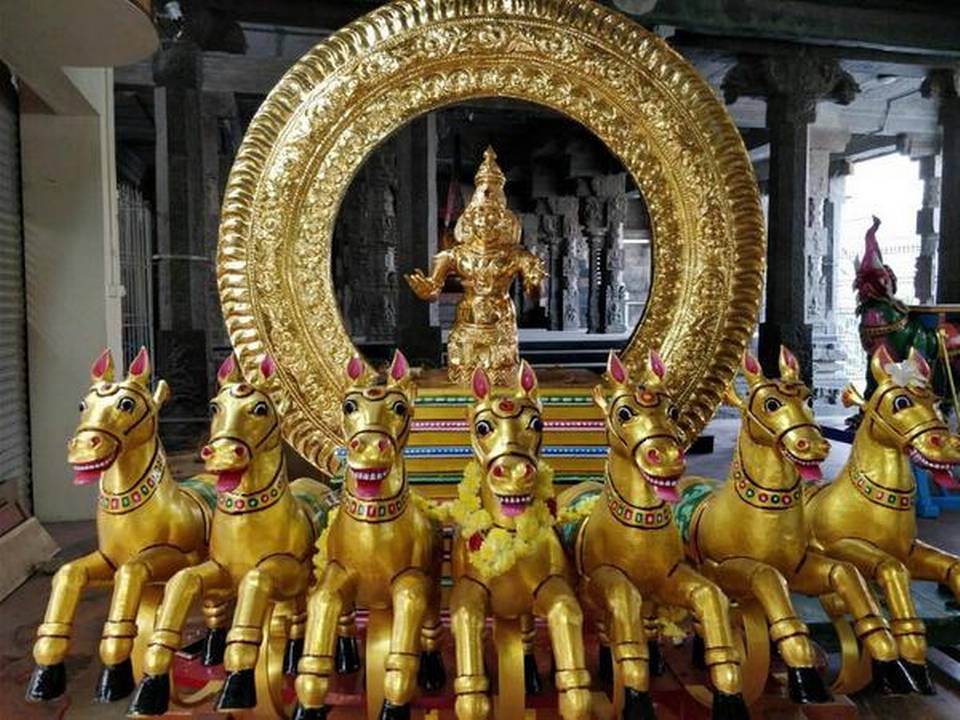
Goddess Kamakshi Amman is seen in the Surya Prabha (the Sun God Surya is behind her as a circle and driven by 7 horses). This is one of the days of the Masi Mahotsavam festival.
In the Tamil month of Masi (February-March), the annual 21-day festival of Masi Mahotsavam is held at the Kamakshi Amman temple, the world-renowned temple dedicated to Goddess Kamakshi. It is celebrated in two parts – the first part is celebrated for 12 days when the main deity Goddess Kamakshi is taken in procession on different vehicles and the second part of the festival is celebrated for nine days during the time of the Navaratri (or Dusshera) Festival, when the temple is decorated and the Goddess Kamakshi is decorated with fine ornaments and clothes, blessing the gathered people everyday, removing their deep ignorance and bestowing enlightenment upon them. The poojas (rituals) performed at the Kanchipuram Kamakshi Amman temple follow the traditional ritualistic pattern and involve huge congregation, decoration of deities and devotion.
Kanchi Kamakoti Peetham
Sankara Jayanti Mahotsavam

Kamakshi Amman Temple, Kanchipuram
The Kanchi Kamakshi temple is affiliated to the Kanchi Kamakoti Peetham, a world-renowned Guru worship center. It is also called the Kanchi matha or the Kanchi monastery. It is located in Kanchipuram and along with the Kamakshi Amman temple, houses a shrine for the great enlightened being Sri Adi Shankaracharya, its founder. Adi Shankara lived the final years of his life here. The lineage of Pontiffs succeeding him here continues till date. The matha is a living tradition that continues to pursue spiritual scholarship in contemporary times. The Kanchi monastery along with its sister monasteries across India has also been an important preserver and source of historic palm leaf manuscripts. The head of the matha is referred to as a “Sankaracharya”.
In the Tamil month of Masi (March-April), the natal birthstar of Sri Adi Shankaracharya (period most concurred upon by ancient and later historians is 788 – 820 CE) is celebrated in the Kanchi Kamakoti Peetham as Sankara Jayanti Mahotsavam. Veda Parayanam (vedic chanting), Bhashya Parayanam (reading commentaries of sacred scriptures for giving powerful cognitions to people), Bhajans (devotional songs sung by all), Shloka parayanams (mantra utterances), discourses and other programs are held, including Rudrabhishekam to Shankaracharya (powerful sacred bath with uttering of the powerful Vedic chant – Sri Rudram).
Every year, as part of Shankara Jayanthi celebrations, the Acharya deity (deity of Sri Adi Shankaracharya) is taken in procession on an elephant to the various teerthas (sacred water tanks) in Kanchipuram and Abhisheka (sacred bath) and vishesha pujas (special rituals) are performed.


